Traveling along the coastline of Iwaki Nanahama, a town that has lived alongside the sea
3rd year School of Culture, Media and Society newwifeNonoIncense (Niitsuuma/Nonoka)

Summer visit to Kunitama Shrine in Nakohi, Iwaki City
My hometown, Fukushima Prefecture, can be divided into three regions: Aizu, Nakadori, and Hamadori, each with its own distinctive climate and history and culture. Locals often joke about each other's regions being "other prefectures." Iwaki City, located in Hamadori, is known as the Hawaii of Tohoku, thanks to its warm climate and vast ocean that makes it comfortable to live in all year round. I grew up in a place where the ocean was only a few minutes' walk away, and where the sound of waves crashing against the seawall echoed every night. So, this time I'd like to introduce my beloved Iwaki.
Iwaki, which faces the Pacific Ocean, has a gentle coastline stretching for 60 kilometers, and from north to south, the seven beaches are Hisanohama, Yotsukura, Usuiso, Toyoma, Nagasaki, Onahama, and Nakoso, collectively known as the "Seven Beaches of Iwaki." The Seven Beaches of Iwaki are so familiar to us Iwaki residents that they appear in the lyrics of folk songs sung and danced at Iwaki Odori Dance, Iwaki's largest festival, held every summer.
Left: Toyoma Beach, one of the Seven Beaches of Iwaki. Nearby is Shioyazaki Lighthouse, a rare lighthouse that can be climbed.
Right: Namitate Beach in Hisanohama. Known as a famous spot for watching the first sunrise of the year.
Based on these seven Iwaki beaches that have been deeply rooted in the local community for a long time, a new, unofficial Iwaki content called the "Iwaki Seven Beaches Handsome Men Project" was born. Handsome characters who personify the seven beaches are spreading information about the charms of Iwaki and seafood-related topics through comics promoting each beach and collaborations with local stores. Many people enjoy sightseeing in Iwaki by touring the seven beaches to support their favorite characters or participating in cosplay events at local inns.
At the local collaboration store, not only will you see displays of colored paper with illustrations of the characters and buy original goods, but you can also actually eat the seafood featured in the promotional manga. Iwaki's seafood, which boasts rich nutrition and freshness, is called "Tokiwamono" and is famous for fried mexicali, monkfish hotpot, and saury popoyaki (minced saury rolled into a hamburger steak and grilled).
Left: The interior of the cafe, created in collaboration with the Iwaki Nanahama Ikemen Project, at SLOW DAYS CAFE in Hisanohama
Right photo: At SLOW DAYS CAFE, they have a daily fish plate with locally caught mackerel, yellowfin tuna, monkfish, and flounder. The photo shows the "fried yellowfin tuna plate." The yellowfin tuna has firm flesh and a moderate amount of fat, making it addictively tasty.
In the Great East Japan Earthquake that occurred in 2011, the coast of Iwaki suffered extensive damage from the tsunami. However, 10 years later, as part of the restoration and reconstruction project, a cycling road called "Iwaki Nanahama Kaido" was constructed along the coastline. You can cycle across Iwaki's beautiful coastline in the pleasant sea breeze.
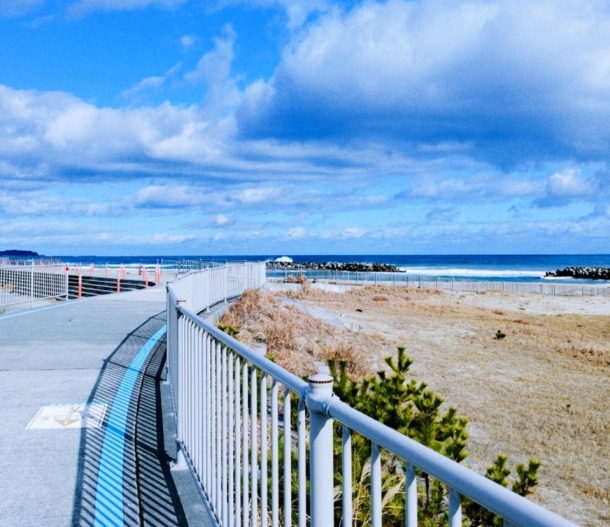
Iwaki Nanahama Kaido and the sea. The view from south of Shikura
There are many tourist spots along the Iwaki Nanahama Kaido, but one of them, "Michi-no-Eki Yotsukura Port," is one I recommend. Local ingredients and handmade side dishes are sold at the direct sales store, and I always end up buying a bento box of sea urchin mixed rice, which I don't usually get to eat.
Yotsukura Port Roadside Station, located near the sea, was damaged by the tsunami caused by the Great East Japan Earthquake. As a result, the pillars of the building are decorated with ceramic plaques bearing messages of support from all over the country, and the benches and slides in the plaza are decorated with illustrations and tiles bearing messages drawn by local elementary school students, giving the place a lively impression and allowing you to feel the presence of people from all over Japan.
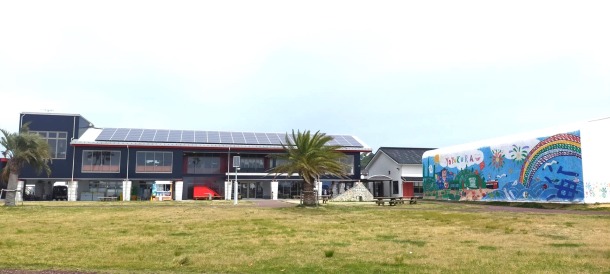
Yotsukura Port Roadside Station is located inside Yotsukura Fishing Port. You can get a panoramic view of the Pacific Ocean from the terrace on the second floor.
Other attractions include the national treasure Shiramizu Amidadō, Iwaki Yumoto Onsen, which boasts a history of approximately 1,300 years, and Aquamarine Fukushima, an aquarium where you can see the ecosystem of Iwaki's ocean, making it a great spot for both a quick stop and a relaxing soothing experience.
Please come to Iwaki and experience the food and nature while enjoying two-dimensional content.
◎ This is what Fukushima Prefecture is like ◎
Located in the south of the Tohoku region, Fukushima borders Miyagi Prefecture, Yamagata Prefecture, Ibaraki Prefecture, Tochigi Prefecture, Gunma Prefecture, and Niigata Prefecture. The population is approximately 1.75 million (as of April 1, 2024). With an area of approximately 13,783 square kilometers, Fukushima is the third largest in Japan after Hokkaido and Iwate Prefecture. The topography is wide from east to west, and from the west of the Ou Mountains to the east of the Pacific coast, it is divided into three regions, Aizu, Nakadori, and Hamadori, and each region has a different climate due to the difference in altitude. The prefecture is full of historical and natural attractions, such as Aizu-Wakamatsu Castle, a famous national historic site, Mount Bandai, the symbol of Fukushima Prefecture, and the beautiful Lake Inawashiro.


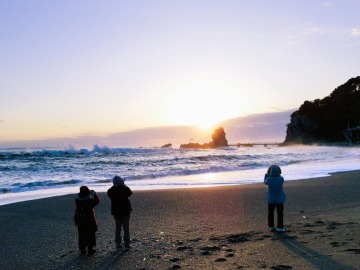
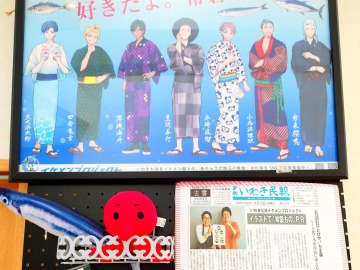
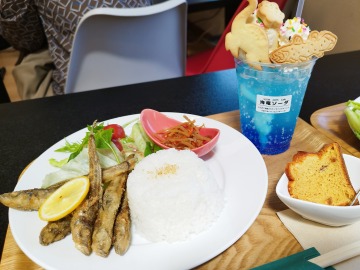
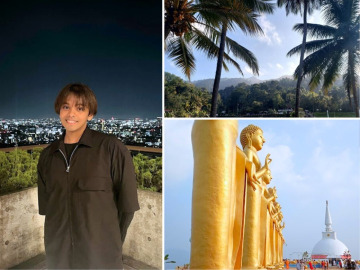
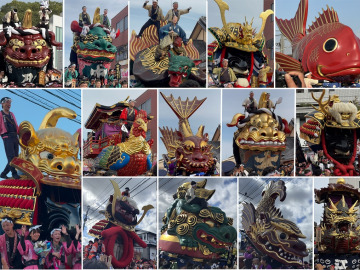
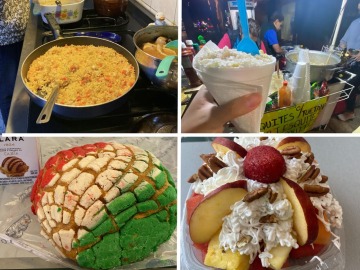
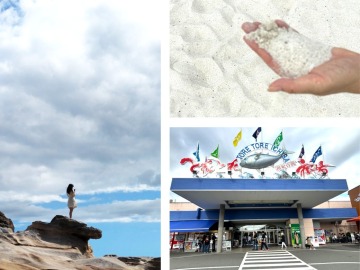
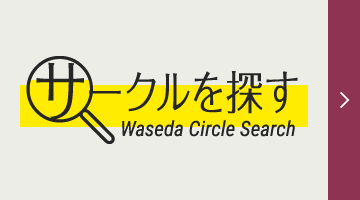
![[Save version] Map of the four main campuses](https://www.waseda.jp/inst/weekly/assets/uploads/2025/09/17cb2975123fc5103172ef60bd98608d-610x458.jpg)

